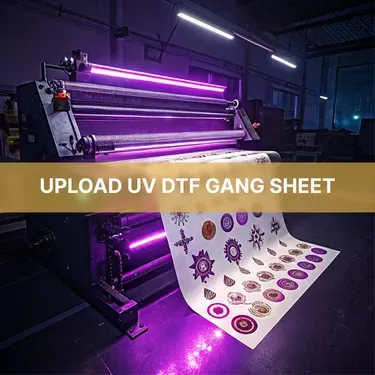DTF Transfers Mistakes: Top 10 to Avoid for Perfect Prints
When it comes to DTF transfers mistakes, missteps in the printing process can lead to frustratingly poor results if not addressed promptly. DTF printing has revolutionized the textile industry, allowing vibrant and durable designs to be easily transferred onto fabrics. However, without knowledge of the common DTF errors to avoid, even experienced printers may struggle to achieve the flawless prints they desire. From incorrect film selection to improper heat press settings, understanding these pitfalls is essential for successful DTF transfers. In this guide, we’ll share valuable DTF printing tips and best practices to ensure your prints are nothing less than perfect.
Navigating the landscape of Direct to Film (DTF) printing can feel daunting due to the common challenges faced by both novices and seasoned professionals alike. Mistakes related to film transfers, inadequate pre-treatment of fabrics, and improper handling can all contribute to unsatisfactory results. Knowing how to troubleshoot these issues with effective DTF printing strategies can save time and ensure a high-quality output. Additionally, employing DTF heat press settings tailored specifically for your materials is crucial for achieving vibrant and long-lasting prints. By familiarizing yourself with alternative terms for DTF practices and maintaining consistency, you can significantly enhance the quality and appeal of your textile designs.
Understanding DTF Printing Best Practices
To truly excel in DTF printing, it’s vital to adhere to best practices that outline a systematic approach to the printing process. One key aspect is ensuring that your equipment is calibrated correctly and that you choose the right substrate for your designs. Films specifically designed for DTF applications should be used to achieve optimal results. Additionally, maintaining a clean printing workspace is essential, as contaminants can easily affect print quality and durability.
Along with careful film selection, proper settings on your printer cannot be overlooked. Adjusting parameters such as print resolution and color profiles can greatly influence the output quality. Ensuring that your ink is correctly set for the film used will enhance print vibrancy and longevity, showcasing your design in the best possible light. Taking the time to implement these best practices will bolster your success in DTF printing.
Common DTF Errors and How to Avoid Them
Navigating through the world of DTF printing can be tricky, especially for those unfamiliar with the process. Common DTF errors include incorrect temperature settings during heat application, which can either burn your film or result in inadequate adhesion of the print. Moreover, not pre-treating fabrics correctly can lead to poor ink absorption, ultimately affecting the overall quality of the print. Identifying these pitfalls early on is crucial for any printer aiming for flawless results.
In addition, one major error is neglecting printer maintenance, which can lead to reduced print quality due to clogged ink lines or printheads. Regular cleaning and maintenance schedules should be established to mitigate these issues. By understanding and actively working to avoid these errors, you enhance your ability to produce high-quality DTF transfers and impress your clients with consistently superior work.
DTF Printing Tips for Success
Achieving success in DTF printing is not just about avoiding mistakes; it also involves implementing effective tips that contribute to the overall quality of the printing process. One useful tip is to use high-quality inks that are specifically designed for DTF printing, as they provide better color vibrancy and excellent wash durability. Your choice of ink greatly influences the outcome, ensuring that your prints look striking and last longer on garments.
Another tip is to take ample time for post-print handling and allow prints to cool adequately before stacking. Rushing this process can lead to smudges and misalignment issues that ruin otherwise perfect prints. Using cotton gloves when handling prints can minimize the transfer of oils and dirt from your skin, preserving the quality of the transferred design. Implementing these tips will elevate your DTF printing results.
Mastering DTF Heat Press Settings
Mastering your heat press settings is essential for perfect DTF transfers. Using the correct temperature is crucial; too much heat can burn the transfer, while too little may not activate the adhesive properly, leading to failed prints. Following the manufacturer’s recommended guidelines for both temperature and pressing time will yield consistent and high-quality results, which is particularly important when working on large production runs.
Additionally, adjusting the pressure applied during the heat pressing process can also impact print success. Ensuring that your heat press is set to the right pressure for your specific film and substrate combination is key to achieving optimal adhesion and finish. Regular calibration of your heat press will help maintain these settings accurately, minimizing errors in the final output and enhancing your overall printing efficiency.
Preventing Inadequate Cooling Time
In the DTF printing process, allowing prints to cool sufficiently after the transfer is a step that should never be rushed. Inadequate cooling can cause the prints to warp or become damaged, leading to unsatisfactory results and increased waste. It’s essential to display patience during this phase; let the prints cool on a flat, dry surface to maintain their integrity and visual appeal.
Additionally, stacking prints while they are still warm can result in misalignments and transfer defects, diminishing the quality of your work. By allowing each print to cool in isolation, you’ll ensure that you maintain the intended design without any unintended marks or distortions, preserving the beauty and quality of your DTF transfers for presentation to clients.
Importance of Regular Maintenance in DTF Printing
Regular maintenance is vital in the realm of DTF printing to ensure consistent and high-quality results. Neglecting maintenance routines can lead to a host of problems such as clogged printheads or inconsistent ink flow, which directly affects print quality. Establish a maintenance checklist that includes frequent cleaning of printheads, checking for ink clogs, and performing alignment tests to keep your equipment in optimal condition.
Furthermore, staying attentive to maintenance not only extends the life of your printing equipment but also aids in achieving vivid, professional-looking prints consistently. By prioritizing maintenance, you mitigate the risk of costly mistakes and ensure that your DTF printing process remains efficient, effectively supporting your business’s reputation for quality.
Frequently Asked Questions
What are the most common DTF transfer mistakes to avoid during the printing process?
Common DTF transfer mistakes include using incorrect film, improper print settings, and skipping fabric pre-treatment. Always ensure compatibility between film and printer, adjust printer settings for optimal quality, and pre-treat fabrics for better ink absorption.
How can I improve my DTF printing best practices?
Improving DTF printing best practices involves ensuring high-quality inks, proper curing times, and precise heat press settings. Invest in recommended inks, follow curing guidelines, and calibrate your heat press for optimal results.
What are effective DTF printing tips for beginners?
Effective DTF printing tips for beginners include familiarizing yourself with printer settings, investing in quality materials, and practicing the pre-treatment process. This foundation will help mitigate common DTF transfer mistakes.
Why is fabric pre-treatment essential in DTF printing?
Fabric pre-treatment is essential in DTF printing because it improves ink adhesion and vibrancy. Skipping this step can lead to dull prints and reduced durability, so always pre-treat fabrics before printing.
How do wrong temperature settings affect DTF transfers?
Wrong temperature settings can cause DTF transfers to fail. High temperatures may burn the film, while low temperatures may not activate adhesive properly, leading to poor print adhesion and quality issues.
What maintenance practices should I follow for successful DTF transfers?
For successful DTF transfers, follow regular maintenance practices such as cleaning printheads, checking ink lines for clogs, and ensuring the printer is well-calibrated. Consistent maintenance is key to achieving high-quality prints.
| Mistake | Description |
|---|---|
| Incorrect Film Selection | Using incompatible film types can lead to poor print quality. |
| Improper Print Settings | Neglecting to adjust settings can create fading and spreading in prints. |
| Failing to Pre-treat Fabrics | Skipping pre-treatment reduces print durability and vibrancy. |
| Using Low-Quality Inks | Using inferior inks results in dull colors and fading. |
| Not Curing Properly | Improper curing can cause prints to peel or crack. |
| Handling Issues | Improper handling can lead to dust and smudges on prints. |
| Wrong Temperature Settings | Incorrect heat press temps can damage prints or fail to activate adhesive. |
| Neglecting Maintenance | Lack of maintenance may cause print quality issues due to clogs. |
| Inadequate Cooling Time | Rushing cooling can distort or damage the prints. |
| Ignoring Production Consistency | Lack of consistency can lead to variations and errors in prints. |
Summary
DTF Transfers Mistakes can significantly hinder the quality of your prints, making it essential to understand and avoid them for perfect results. Each of the ten mistakes outlined highlights critical areas where attention to detail and proper procedure can enhance print quality. By ensuring the correct materials are selected, settings are adjusted accurately, and maintenance practices are followed, printers can achieve stunning and durable prints that meet client expectations. Emphasizing preparation, execution, and follow-up ensures that printed designs truly represent the skill and craftsmanship behind them. By adopting these practices, anyone can master the DTF printing process and deliver professional-grade results.







